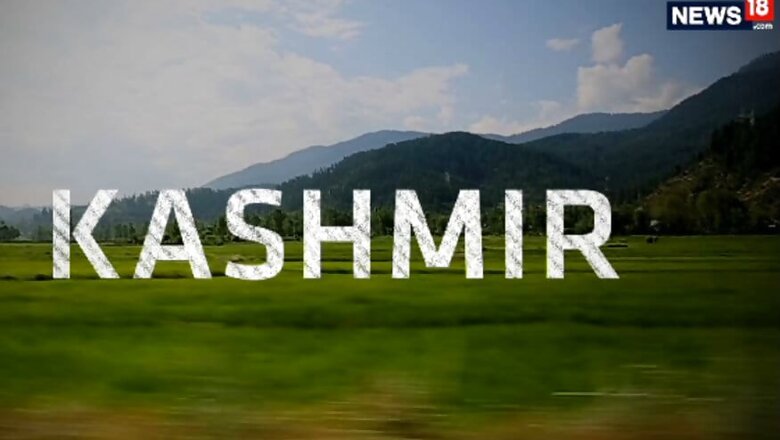
views
Charunda(LoC): Mehboob’s beige colored Kurta flaps freely amidst the breeze coming from the other side as he stands atop the last mountain under India’s control. Kifayat, his cousin, stations himself right behind him, both overlooking into a picturesque panorama dotted with olive green military posts mounted with tricolors.
In front of the two boys lay a razor-sharp barbed concertina wire — cold, hard and rough to the touch — cutting Kashmir into two parts; one in India and the other under Pakistan’s control.
The fence, the surrounding dirt and the wild grass tell the stories of those who patrol it, those who live next to it, and of those who dare not try to cross it — at least not anymore.
This tangled fence, called the Line of Control (LoC), is the first of the three-tier border fencing; the last point till one can go.
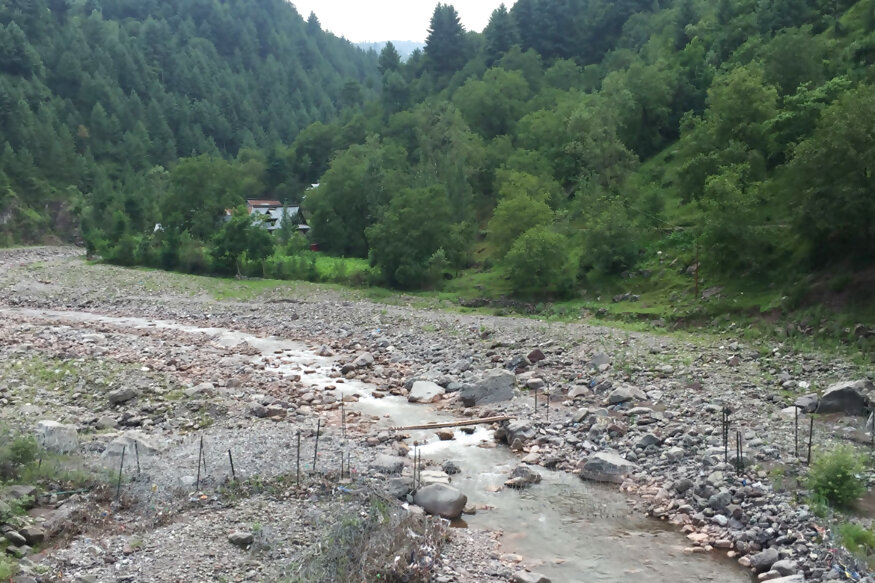
Jammu and Kashmir has 734 Kms of LoC running through different terrains. Here, it passes through the tall wild grass, where cannabis grows abundantly, through the dense forests, and the choppy waters of Haji Pir stream that flows from Pakistan, corroding the stanchioned metal and the tangled wires.
“Beyond it," as Mehboob says, “is the ‘other country’."
He points out with his finger to a Pakistani bunker. “That is them," he says. The breeze, stronger on that side, makes the giant green flag flutter furiously atop it.
Like a stamp of authority, the flags of both the countries mark the land they control.
It’s getting dark. The sound of the Azaan breaks the unusual calm. It blares from a mosque loudspeaker from Sajiwad, the first Pakistani village across the fence.
Mehboob’s silhouette mirrors across the concertina wire, half of it in India and the other half in Pakistan – literally. He walks past the barbed wire, looking into what is called the Pakistan occupied Kashmir (PoK) before he heads home to offer his evening prayers. His broad and bulky posture gives away his age more than that he actually is — a little not more than thirteen.
Kifayat, 12, much shorter and leaner than his cousin, hides coyly behind him and follows.
“We can’t roam freely after six in the evening. It’s not safe," Kifayat says on the way. “Occasional gunfire after evenings is a norm here. But lately it has remained a little quiet."
The night before — Thursday, July, 20th — was not relatively calm. Gunfire could be heard, but it sounded far off in the distance. Charunda, the last village on this side of the LoC, and where Mehboob lives, fortunately was not in the line of fire this time.
“It [gunfire] was coming from the other side," Mehboob recalls. “I could see flashes of lights beaming from the mountain controlled by Pakistan."
The lights — which streamed with a projectile — were phosphorus bullets that burn as they travel through the air so that one can see where he is shooting. The gunfire was targeted at the Indian army installations on the LoC, meters away from where Mehboob lives. The villagers, as part of their survival drill, shrunk themselves inside their rooms, hoping that a bullet or a shell doesn’t find its way into their homes.
Uri is a picturesque town resting on the banks of river Jhelum, some 110 kilometers north of Srinagar, the summer capital of Jammu and Kashmir. Unlike the calm and steady waters of the river in Srinagar, Jhelum flows furiously here, managing its way through single-storey house sized boulders and narrow ravines.
The road leading to Uri is garrisoned on both sides. Almost. Along the way, for more than a fifteen-kilometer stretch, military men — stationed inside their bunkers and along the roadside — shoulder their AK-47 rifles. It’s a normal sight. One can imagine why the strict security installations, given the road directly leads to Muzaffarabad in Pak, often called Uri’s sister town.
Uri is a picturesque town resting on the banks of river Jhelum, some 110 kilometers north of Srinagar. The town has villages all the way up to the LoC.
Uri’s terrain is beautiful with scattered houses dotting the mountainside with tall green paddy fields spreading across the landscape. The town with a population of approximately 60,000 also houses 480 MW NHPC power station commissioned in 1997; it’s electricity distributed in three states — Delhi, Punjab and Haryana.
“If not the last town before the LoC, and the overwhelming military presence, Uri could have been a major tourist destination in Kashmir," says Bashir Ahmad, the driver of the car we travel in.
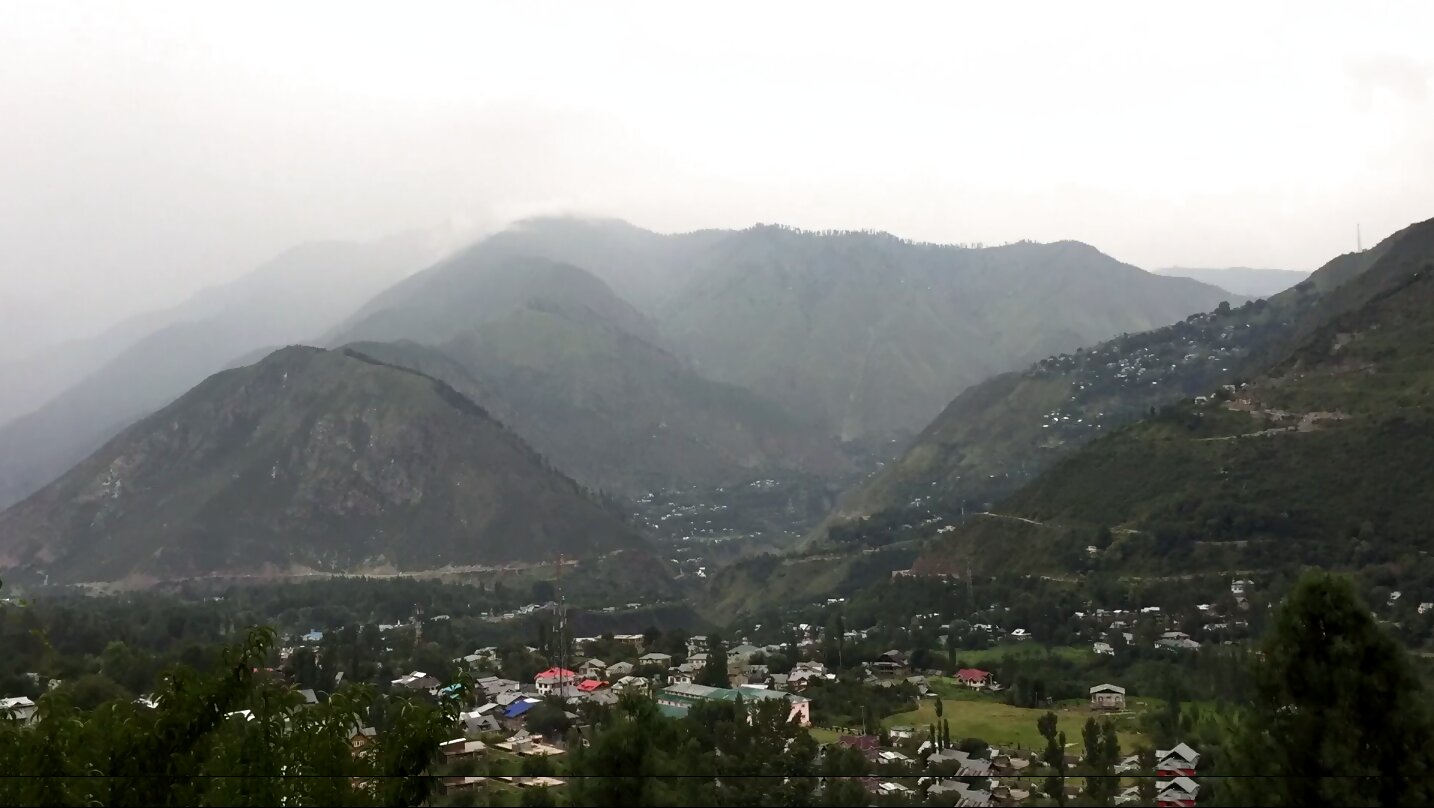
Uri has villages all the way up to the LoC, and is the only major town in Jammu and Kashmir that is roughly 4 km from the nearest point on the border. With lives here marred by cross border shelling and infiltration in 90s, the town got its first Government Degree College in 2015. In recent times the town came in news on September 18, 2016, when four heavily armed militants managed to sneak into the 12 Infantry Brigade complexes and killed 18 Army personnel. The attack took Uri back to the horrible past they want to forget, and a harsh reality as well: their proximity to the LoC.
Javed Budoo, a local resident who works for the sports department in the town, remembers the time when shells used to land in Uri anytime during the day or night. It has been little less than 14 years when the constant sound of shells falling on schools, houses, shops and other building ceased. But the scars remain.
For Javed, in his late fifties now, the town has always bore the brunt of the hostilities between two countries. “The border villages," says Javed, “have gone through the worst."
From 1999 to 2003, when the hostilities between the two countries were at its peak, Uri witnessed heavy exchange of fire from both the sides. Javed, then in his thirties, used to visit the affected areas and offer help to the victims of the shelling.
“Those times changed the town forever. More military installations began to crop up. Bofors tanks were set up around the town, and the psyche of the people changed forever. Now whenever we hear of cross border shelling our minds go back to the times shells rained on us," Javed says.
However, since 2003, the town has seen itself grow. More buses have started to ply through its roads now. More shops have opened up and more people are now thronging its market.
Some things, however, haven’t changed. Beyond the market, a normal identification paper — passport, Aadhaar, or a voter ID — doesn’t work. What one needs is a special identity card, irrespective of the place you visit.
Nazir Raja is a tall young man in his thirties with broad shoulders. I meet him inside the office of Sub-Divisional Police Officer, Uri. He has come to request for an identity card to visit his sister Ruksana who lives in one of the border villages.
Nazir, who prefers to identify himself as Naz, a sobriquet taken from a character of a Pakistani soap opera, says the identity card “is not just a piece of paper."
Like other people of the town, he has to register his name, the name of the driver if he is travelling in a vehicle; its registration number, and the place of the visit.
“It’s a constant reminder of how the people of the town aren’t able to move around in their own areas," Naz says.
From Uri, the nearest border villages can be reached by crossing an iron bridge that connects more than thirty five other villages to the Tehsil headquarter in Uri. The bridge is named after Nand Singh, who defended it in the 1948 war when the tribals from Pakistan invaded Kashmir. The bridge also connects Kashmir to Muzaffarabad and was once under constant watch of the troops to prevent Pakistani shells from blowing up Army convoys that used to pass through it.
The times have changed but the nearby Army bunkers are an indication how much importance the bridge holds for the troops.
The bridge connects to a narrow crumbling mountain road, which leads to Balkote. A village of less than 100 families has paid for its proximity to the LoC. Gulam Rasool, a 70-year-old villager, recalls the times when the sky used to rain mortar shells. “This place was once ravaged by war," he says.
Until the ceasefire of November 2003, Rasool, rarely slept in his own bed. Laid out within sight of the spectacular snow clad peaks of Pakistan’s Haji Pir, the village used to turn into a ghost town during shelling. Most nights the villagers would shelter in few bunkers tucked away on the precipitous drop to the Haji Pir stream.
As we walk through the village, a faint sound of news playing out from a television catches our attention. The voice of the female news anchor is distinct in chaste Urdu.
A group of men are watching a bulletin on a TV screen inside a shop. The text written in Urdu flashes across the TV screen while a reporter talks about how the weather in Peshawar will be wet today. It’s a news channel from Pakistan.
Mohammad Yusuf, the shopkeeper, points at an old man sitting on a bench outside the shop. “He likes to watch news coming from the other side [Pakistan]," Yusuf says with a smile.
The man he is referring is Ghulam Muhammad, his uncle. Muhammad, who is in his late eighties, has a penchant for Pakistani news and to fulfill his wish, Yusuf had to buy a huge satellite dish from a nearby village.
“You see this small dish," Yusuf points out to a Tata Sky dish mounted on the house of his balcony.
“These dishes don’t beam TV channels from Pakistan. So I had to buy a bigger dish, the one that used to be used earlier, a satellite dish, so that my uncle could watch Pakistan news."
Muhammad’s liking for news channels from Pakistan isn’t new. He remains updated on what's hapening across the border. "This penchant for news from Pakistan," Muhammad says, "has continued for decades.
When Muhammad was 10, he saw the Pakistani tribals run down the mountains shouldering their guns. He shudders even today at the vandals who rampaged through his village in 1948 that saw him go to the other side for years. Back then there were no fences.
“I ran as fast as I could. I crossed the mountains and within hours I was in Pakistan. I stayed there for the next ten years. It was in 1958 when I came back and since then have been living here," the octogenarian says.
For years, before a fence was put on the LoC, Balkote was a mandatory night halt for all the travellers on the road to Rawalpindi or Islamabad in Pakistan. Every day horse-drawn carts filled with travellers, British and native, would turn up at the village and spend the night. Next morning they would leave for Rawalpindi and by the afternoon they would have lunch there.
“Not anymore," Muhamad says. “The lines have been drawn now."
Muhammad wants to see his sister, who was married to a Pakistani national in 1982. The fate of hundreds of young men and women who crossed over to Pakistan has always remained uncertain.
“My sister wants to come and visit us but they [authorities] won’t allow her. After all, when she was married in 1982, she and her husband crossed the border without permission," Muhammad says. “They broke the law."
Tucked amidst the terraced rice fields, lined by apple trees and yellow mustard fields, is Balkote High School. Students from different border villages come to study.
A cheerful group of children — boys and girls — run across the small playground in front of the school. Their laughter fills the air. Ghulam Muhammad Moon, a 59-year-old teacher at the Balkote High School, keeps a watch on them from the school balcony.
“Student here, especially the girls, struggle in communicating," Moon laments. “It’s not that they aren’t good at studies. The maahaul is such."
Moon is referring to a recent death of a schoolboy. In April this year, Hafeez, a 14-year-old boy, drowned in the Haji Pir stream. The boy was on his way home when he jumped into the water to take a bath. His body was found two days later.
On the face of it, this seems like a random event — a boy going to take a bath and drowning because of the fast currents of the stream. Or maybe not.
“Why do you think Hafeez jumped into the water to take bath?" Shafqat Mabool, the 55-year-old headmaster of the school asks. Other schoolteachers sitting inside the office premises are silent.
Maqbool picks up his cup of tea and steps out of the office. He points at a mountain. “Hafeez lived there," he says. "He had to trek two kilometers every day to reach school and cover the same distance while going back. It was a very hot day; the day he drowned. All he wanted was to cool himself off and prepare himself for the journey to his home."
Hafeez used to trek down from Charunda for two hours, cross a fast stream filled with steep slippery stones and then reach the school. And he wasn’t the only one who had to go through all that just to reach school. There are still many like him.
I meet Siraj and Tauqeer, both 12-year-old classmates and friends. When asked what he hopes to do when he grows up, Siraj smiles and proudly says that he wants to work as a doctor. Tauqeer, however, is happier to play football and make a career in the sport.
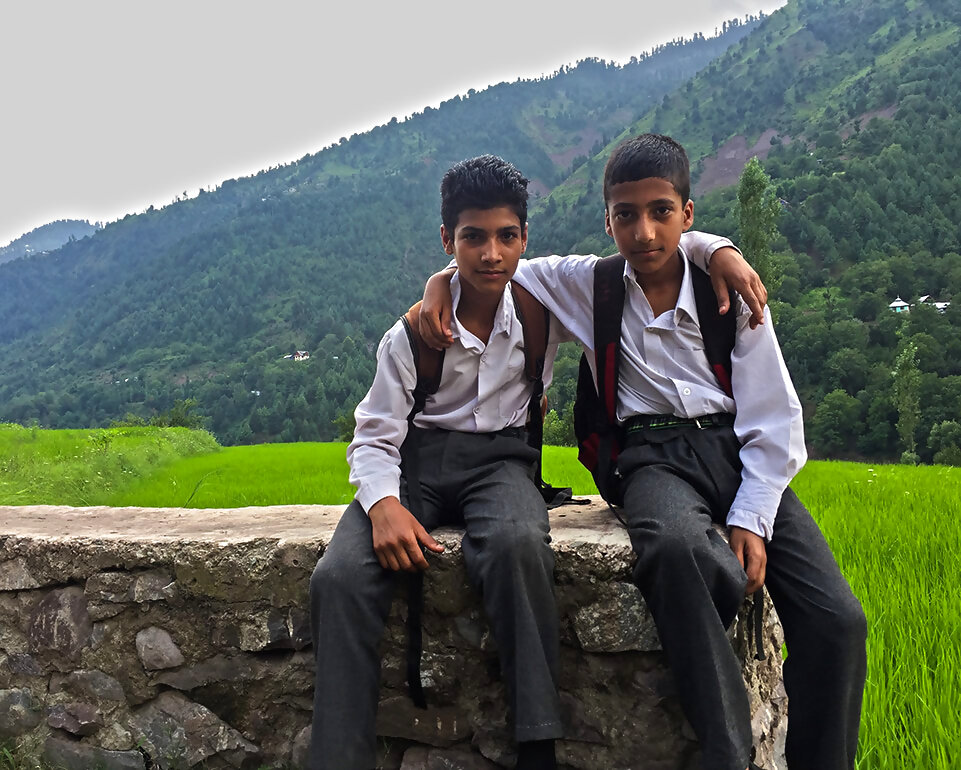
“Is that possible?" questions Owais, a young man in late twenties. Owais teaches mathematics to Siraj and Tauqeer. He is worried that the students like Siraj and Tauqeer, who come from border areas, don’t get the education they deserve. “Sometimes, they continue to miss out on vital aspects of their education. The longer they remain out of school, the less likely they will even want to return," Owais says.
He recounts his visit to Charunda when he visited one of his students home. “Put one foot wrong and you drop 5,000 feet into the stream."
Charunda is a small hamlet of no more than 100 families. The only road to the village has been under construction from last seven years. It remains closed during rains. The threat of shooting stones and huge mudslides mean the villagers have to make an uphill trek that takes almost two hours. And to buy basic stuff for daily needs; an hour more to Uri.
This forbidden trek in the heights of a mountain that is garrisoned on all the sides – the path that is made infinitely more treacherous by rain – has made the students’ life hard. The threat of a sudden death looms large.
Maqbool the headmaster says that politicians of the area “never visit the school". Some years ago he had recommended the education department to build a high school in Charunda and other border villages so that the students don’t have to spend so much time to reach their schools. The recommendation, however, fell to deaf ears.
As we leave the school and make our way further uphill towards Charunda, the headmaster Maqbool warns us of the stream. “Cross it carefully," he says.
A fifteen-minute walk from the school and one reaches the spot where the stream is less tempestuous. The water doesn’t rush past as it does near Balkote.
A local shepherd, Habibullah, 65, helps us cross the stream. His goats run along with us. Habibullah has seen life closely on the LoC. He has seen his stock run into the other side of the LoC and come back the next day. Unlike humans who are barred from going to the other side, his goats, he says, are “countryless".
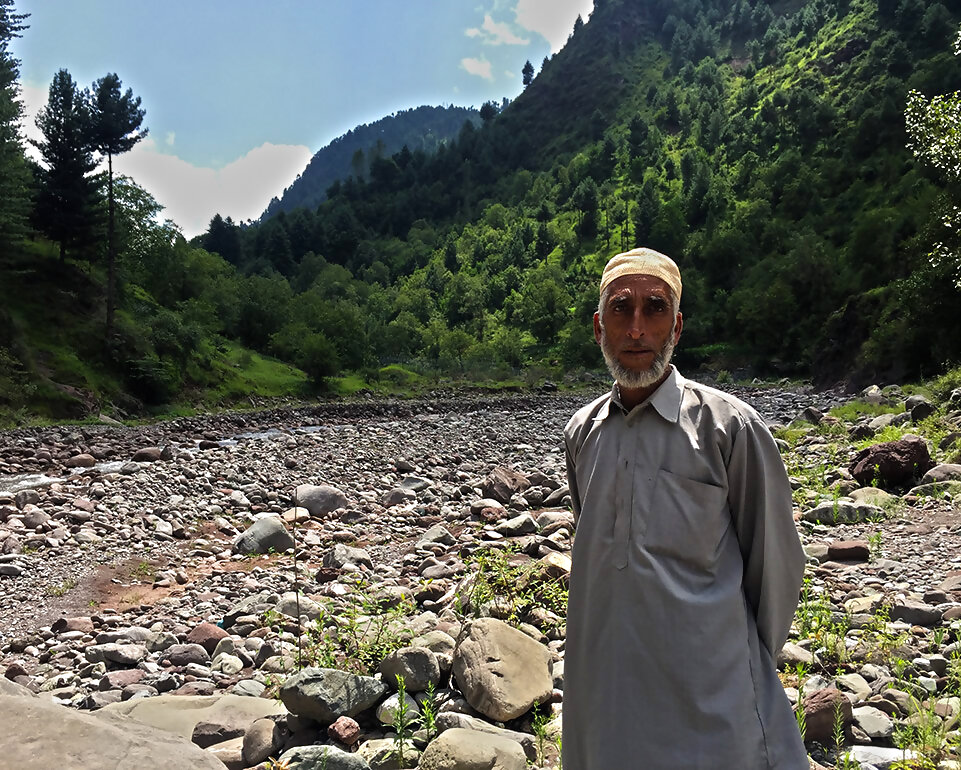
But the crossing over of his stock to the other side has its own problems. Sometimes the goats get stuck in the barbed wires and bleed themselves to death. Or worse, they step over the land mines that are spread across the fence on both sides.
As we cross the stream, a strange irony is hard to miss. The Haji Pir stream that flows from Pakistan drops its waters into Jhelum. The Jhelum then snakes its way into Pakistan, thus returning the waters back to the place of its origin.
Across the stream is Tilawadi, a village with half the population of Balkote. Many people here, like every other village on the LoC, are appalled by the very thought of a fence — or any form of physical barrier. The fence has literally divided their village into half.
Mohammad Ayoub, a 45-year-old local farmer, has half of his agricultural land on the other side of the fence. Decades ago, his father Muhammad Sartaj used to get some sort of compensation from the government for the land that had gone to the other side. After his death the compensation stopped to come. Ayoub, wholly dependent on farming, was given no reasons.
“Our family owned this land much before the fence was setup. Today the fence still exists but our land doesn’t," Ayoub says, his eyes fixed to the ground.
Tilawadi is a village under the lap of a mountain. The border fence runs along it and makes its way up the mountain till Charunda – our last stop.
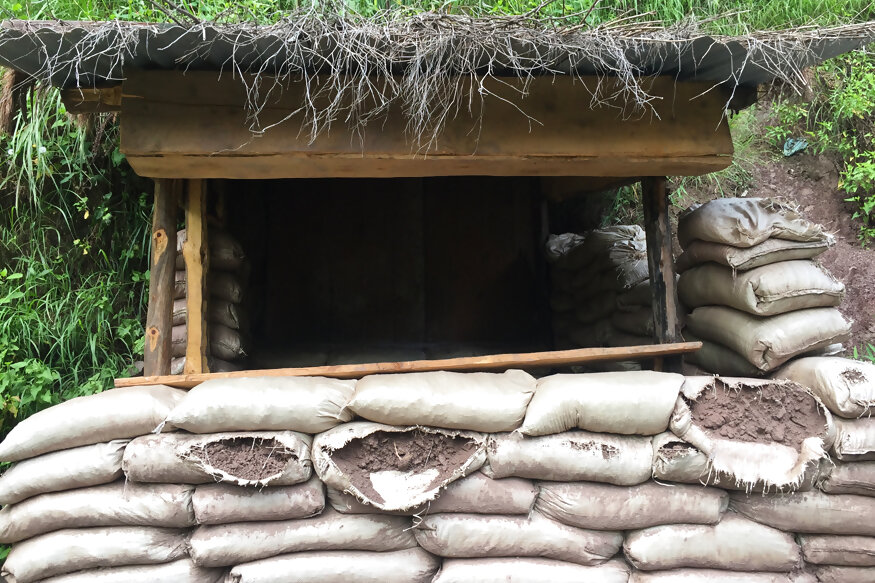
As we trek our way to the last village on the LoC, the fence starts to become thicker, the wires more tangled. The lush green grass and tall pine trees remain divided. A constant vigil by both the armies, overlooking the mountain, feels unnecessary. Not until you come to think that this is the LoC and the Armies facing each other are there to protect the every inch of the land they hold.
In Charunda, a strange reality awaits us. A soldier is calling the students who have trekked for hours to reach their homes. What’s odd is that there are no names to be heard. Only numbers.
“Number four," shouts the Army Jawan.
A young boy emerges from the group, signs on a piece of paper and walks away into a maze of old wooden houses.
Haji Asadullah Mir, the 80-year-old Sarpanch of Charunda, sums up the irony of living at the LoC. As his white beard flows carelessly amidst the breeze, he looks at me and speaks in a very soft tone.
“The first village on other side is not more than 800 meters away, still there is a time zone difference of 30 minutes between them and us. They couldn’t even stop at dividing the time."


















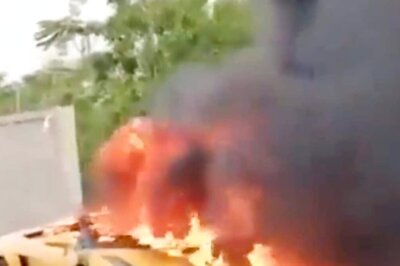

Comments
0 comment